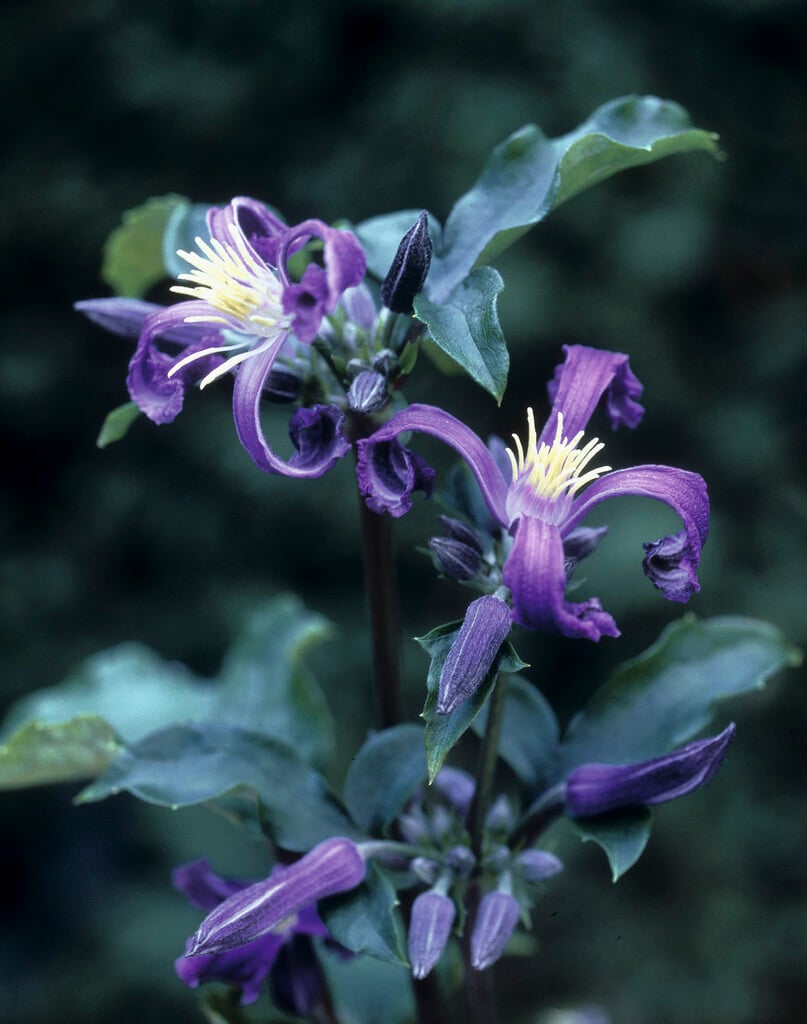Clematis heracleifolia 'China Purple' (H)
clematis 'China Purple'
A deciduous bushy, upright perennial with dark green leaves. Fragrant, rich hyacinth-like violet-blue flowers appear in the summer, turning to fluffy seedheads in the autumn. This variety scrambles rather than climbs
Synonyms
Clematis heracleifolia 'China Blue'Clematis tubulosa 'China Purple'
see moreClematis 'China Blue'
Clematis 'China Purple'
Size
Ultimate height
0.5–1 metresTime to ultimate height
2–5 yearsUltimate spread
0.1–0.5 metresGrowing conditions
Moisture
Moist but well–drained, Well–drainedpH
Acid, Alkaline, NeutralColour & scent
| Stem | Flower | Foliage | Fruit | |
| Spring | ||||
|---|---|---|---|---|
| Summer | ||||
| Autumn | ||||
| Winter |
Position
- Full sun
Aspect
South–facing or West–facing
Exposure
Exposed or Sheltered Hardiness
H6Botanical details
- Family
- Ranunculaceae
- Native to GB / Ireland
- No
- Foliage
- Deciduous
- Habit
- Bushy, Columnar upright
- Potentially harmful
- Skin irritant. Wear gloves and other protective equipment when handling. Pets (rabbits): Harmful if eaten. For further information and contact numbers regarding pets, see the HTA guide to potentially harmful plants
- Genus
Clematis can be deciduous or evergreen shrubs or herbaceous perennials, mostly climbing by twining leaf-stalks, and often with showy flowers. Some have attractive fluffy seedheads in autumn
- Name status
Accepted
- Horticultural Group
- Heracleifolia Group consists of deciduous, woody-based sub-shrubs with erect or climbing stems, sometimes herbaceous, ternate or pinnate leaves, and narrowly bell-shaped or starry flowers on the current year's growth in summer and autumn
How to grow
Cultivation
Plant herbaceous clematis at soil level in moisture-retentive, well-drained soil in full sun, with the roots and base of the plant in shade. See clematis cultivation. May require support. See staking perennials for further advice
Propagation
Propagate by division or take basal softwood cuttings of herbaceous clematis in spring
Suggested planting locations and garden types
- City and courtyard gardens
- Cottage and informal garden
- Wildlife gardens
- Banks and slopes
- Flower borders and beds
Pruning
Pests
May be susceptible to aphids, snails and caterpillars; petals may be eaten by earwigs
Diseases
May be susceptible to honey fungus (rarely), clematis wilt and clematis slime flux
Get involved
The Royal Horticultural Society is the UK’s leading gardening charity. We aim to enrich everyone’s life through plants, and make the UK a greener and more beautiful place.
